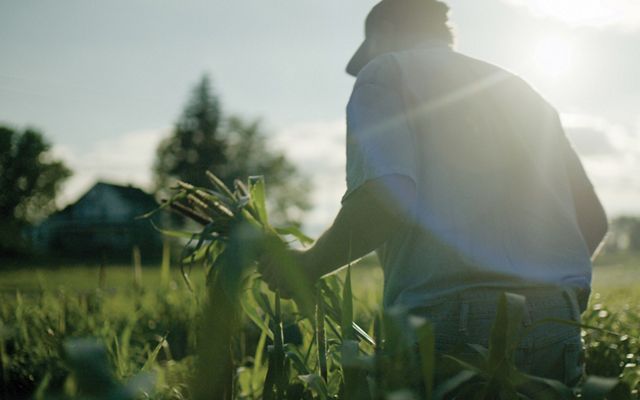Why Connecting the Biodiversity and Climate Crises Matters for Real Progress
Natural Climate Solutions must be at the core of a Global Biodiversity Framework, as Canada welcomes world leaders to a make-or-break summit.
As the saying goes, timing is everything.
This week, negotiators from around the world are in Sharm El Sheikh, Egypt, for the annual United Nations climate negotiations, an event referred to as COP27. Countries will aim to make progress on ambitious new goals set at last year’s climate COP in Glasgow, Scotland—all of which aim to slow catastrophic global warming.
Mere weeks after COP27 wraps up, negotiators will land in Montreal, Quebec, for another global event, the United Nations Convention on Biological Diversity Conference, referred to as COP15. The goal of this event is to deliver the world’s first-ever Global Biodiversity Framework—basically, the equivalent of the “Paris Agreement” for halting and reversing the global loss of ecosystems and wildlife.
Guide to COP27
Everything you need to know about the global climate conference and how you can take action. View Guide
Climate change and biodiversity loss are dual, interdependent crises facing humanity. Climate change is a major driver of biodiversity loss, acidifying the oceans, parching the soils and torching the forests. Ecosystems with high biodiversity, for their part, are incredibly effective at drawing carbon from the atmosphere, combatting drought, filtering water, growing the foods that nourish us and the materials we use to house and clothe ourselves—all while stimulating our psyches and animating our cultures.
The solutions that bring climate and nature together—Natural Climate Solutions (NCS)—must be integral to tackling both crises. By protecting, better managing and restoring nature, we can make real and rapid progress in the race to slow global warming and halt biodiversity loss. In Canada, our intact ecosystems and resource economy offer a unique opportunity to leverage the power of NCS in a way that can have global impact, while benefitting rural, remote and other communities.
Quote
COP15 aims to deliver the world’s first Global Biodiversity Framework—basically, like the ‘Paris Agreement’ for biodiversity.

Momentum is Everything
Our global CEO Jen Morris speaks about COP27 & the UN Biodiversity CBD-COP15.
Read NowRepeatedly delayed due to Covid-19, COP15 was supposed to happen in Kunming, China, in 2020. By the time the Canadian government announced the biodiversity conference’s new location this summer, the pressure had intensified to get all countries on-side for a successful outcome by year's end.
This summer, I travelled to Nairobi, Kenya, to participate in emergency talks, as part of two delegations: the Government of Canada’s delegation, and that of Nature United’s global affiliate. With one foot in each camp, my role was to broker information and strategies to help negotiators harness the power of Natural Climate Solutions.
The economics of Natural Climate Solutions should make them a shoo-in: Research by the World Economic Forum estimates that more than half of the world's global economy depends on nature. Restoration and management actions can both reduce emissions and help us adapt to climate impacts, while creating new jobs and revenue streams for farmers, ranchers, foresters, and Indigenous communities.
But inside the negotiating halls in Nairobi, there were disagreements around how to define the ecosystems the world should seek to protect; how to align global finance with nature positivity; and how to ensure that communities on the frontlines of the climate and biodiversity crises aren't left behind.
Delegates clashed over how to transform productive sectors such as agriculture and forestry, which are a major source of biodiversity loss, yet hold extraordinary potential to help restore ecological balance and thriving rural economies.
Tensions strained discussions about how to uphold human rights, particularly among Indigenous peoples across the globe.
Quote

Natural Climate Solutions can reduce emissions and help us adapt to climate impacts, while also creating new jobs and revenue streams for farmers, ranchers, foresters, and Indigenous communities.
As the clock ticks towards COP15 in December, we need world leaders to join a new global marathon to pull nature and biodiversity back from the brink. Canada can inspire, through example.
Already, Canada has made national commitments to protecting 30% of lands and waters by 2030, and to halting and reversing biodiversity loss by 2050. It has mobilized upward of $5.5 billion for Natural Climate Solutions to tackle climate change and biodiversity loss, while unlocking economic opportunities in communities bearing the brunt of climate change and shifting energy markets.
And the government has adopted the United Nations Declaration on the Rights of Indigenous Peoples into Canadian law, setting the stage for a new relationship with Indigenous Nations that honours their title over many of the lands and waters that need to be protected over the next 8 years, and the value of their knowledge of the ecosystems in peril.
Not least of all, Canada has piloted innovative financing models and programs with proven track records for supporting Indigenous rights and authorities as ecosystem stewards in their traditional territories.

Let’s be clear: Canada still has a long way to go to meet its commitments, but we have many cornerstones in place to get us there. Working with Indigenous peoples, civil society groups and the Provinces and Territories, the Government of Canada can lead in the run-up to COP15 by:
- Announcing a comprehensive action plan to accelerate progress towards Canada’s 25x25 and 30x30 targets, supported by new directives for all relevant Ministers
- Announcing long-term funding to support large-scale Indigenous-led conservation, using using innovative mechanisms to stimulate collaborations between Indigenous Nations, philanthropy, private investors, and governments; and
- Championing the potential of Natural Climate Solutions to tackle the dual climate and biodiversity crises, while supporting job-creation and sustainable transitions in key sectors such as finance, agriculture and forestry.
Nature United and our peers in Canada and around the world will be there to remind the Government of Canada and other countries of the opportunity and responsibility they carry, and to support their efforts all along the way.
With just one month to go, there’s no time to waste.




